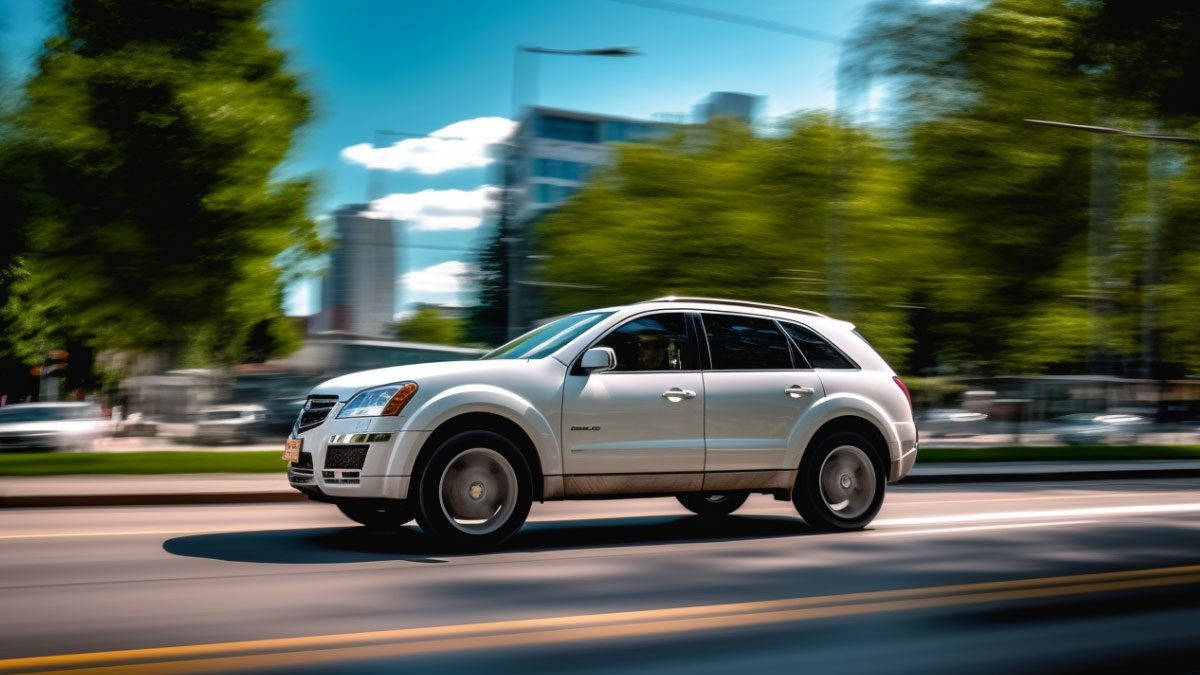Will ABS Light Come On If Brakes Are Worn?- Unraveling the Connection
The ABS light is an important indicator on a vehicle’s dashboard that warns drivers of potential issues with their ABS. One common concern among car owners is whether the ABS light will come on if the brakes are worn.
If you ask ‘Will the ABS light come on if brakes are worn?’ the is- No, the ABS light typically does not come on specifically due to worn brakes. The ABS system primarily focuses on monitoring wheel speed and preventing wheel lock-up, rather than directly assessing brake pad or rotor wear.
In this article, we will explore the connection between the ABS light and worn brakes, providing valuable insights into brake system maintenance and safety.
Will ABS Light Come On If Brakes Are Worn?
No, the ABS light will not come on solely due to worn brake pads. While worn brake pads do not directly cause the ABS light to come on, they can indirectly impact the performance of the ABS system.
Severely worn brake pads may result in uneven braking, wheel lock-up, or increased stopping distances during emergency braking situations. These consequences are related to brake wear and can affect the overall braking performance, but they do not directly activate the ABS light.
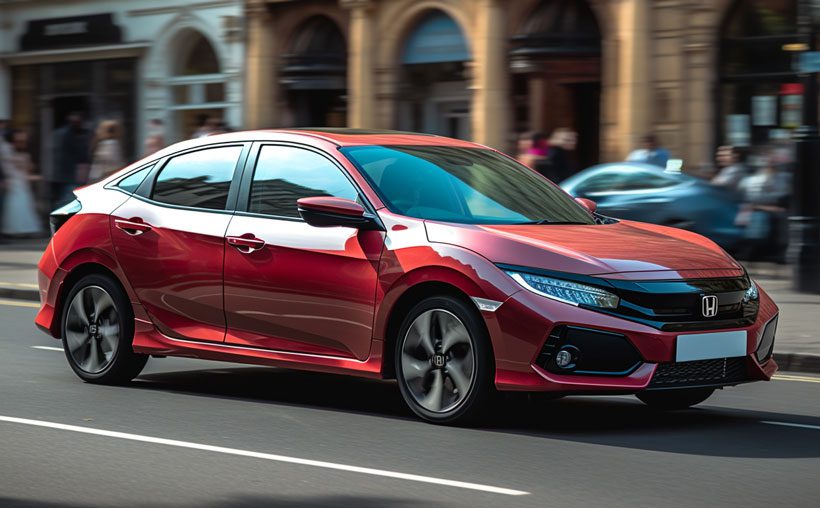
Addressing ABS Light Illumination
If the ABS light illuminates the dashboard, it is recommended to have the vehicle inspected by a qualified technician.
They can diagnose the specific issue causing the ABS light to come on, whether it is a malfunctioning sensor, a control module problem, a hydraulic system issue, or low brake fluid.
Proper diagnosis and repair will ensure the ABS system functions optimally, maintaining the vehicle’s safety on the road. Also, watch this video to have a proper answer to your question “Will ABS Light Come On If Brakes Are Worn?”.
What Does The ABS Light Mean?
The ABS light, when illuminated on the dashboard of a vehicle, signifies a potential issue with the Anti-lock Braking System (ABS). The ABS is a safety feature designed to prevent wheel lock-up during braking, especially in emergency situations.
When the ABS light comes on, it serves as a warning indicator that there may be a problem with the ABS system, and it requires attention and potential repairs or diagnostics. Here are a few possible meanings behind the ABS light:
ABS System Malfunction
The most common reason for the ABS light to illuminate is a malfunction within the ABS system itself. This could be because the ABS monitor is broken, the control module is broken, or the hydraulic control unit is broken.
A malfunction in any of these components can disrupt the proper functioning of the ABS system and trigger the ABS light.
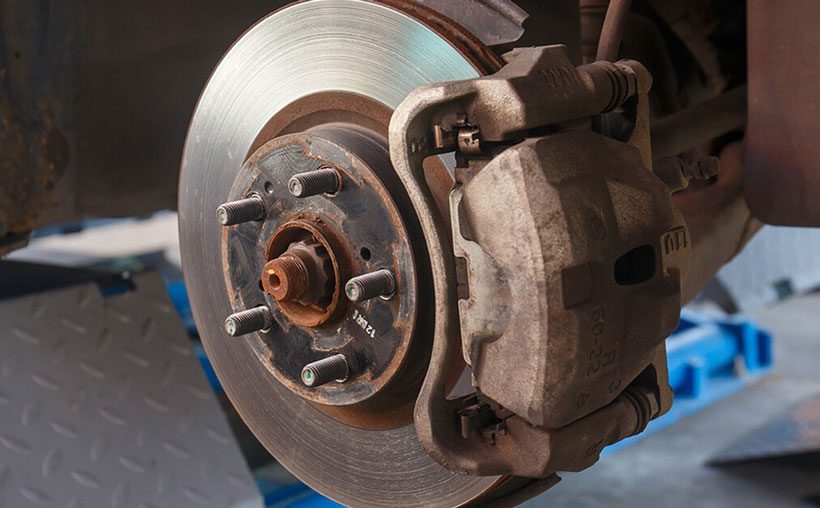
Low Brake Fluid
The ABS light may also come on if the brake fluid level in the vehicle’s braking system is too low. (A commonly recommended level for brake fluid in many vehicles is around 1/2 to 2/3 full on the brake fluid reservoir).
The ABS system requires an adequate amount of brake fluid to function optimally. If the fluid level drops below a certain threshold, it can activate the ABS light as a warning sign.
ABS Sensor Issues
The ABS sensors play a crucial role in monitoring the rotational speed of the wheels. If any of the ABS sensors become damaged, dirty, or experience a malfunction, it can result in the ABS light turning on.
A faulty sensor will disrupt the data transmission to the control module, causing the ABS system to detect an issue and trigger the warning light.
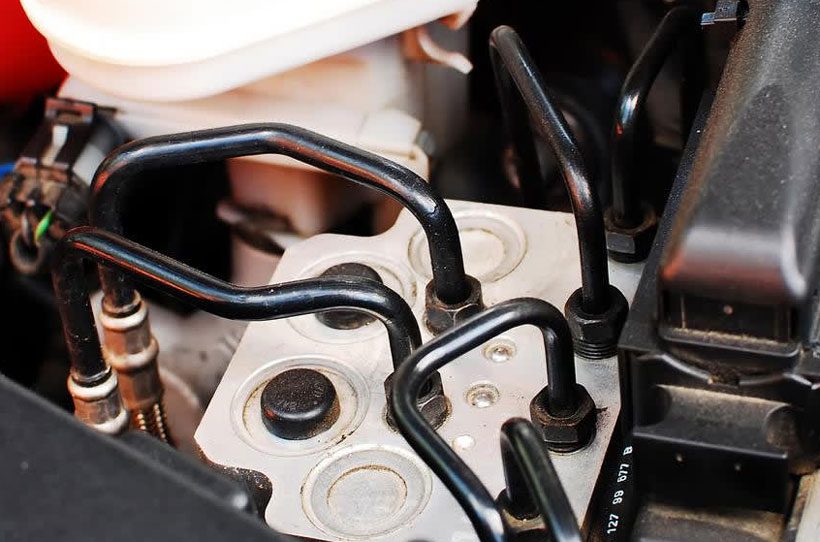
Control Module Problems
The control module is responsible for receiving data from the ABS sensors and controlling the ABS system. If there is a problem with the control module, such as a software glitch or electrical issue, it can lead to the ABS light activation.
Other ABS System Components
The ABS light can also indicate issues with other components of the ABS system, such as faulty valves, damaged ABS pump motors, or wiring problems. Any malfunction or damage to these components can result in the ABS light coming on.
Do I Need New Brakes If The ABS Light Is On?
It is important to note that the ABS light alone does not necessarily indicate the need for new brakes.
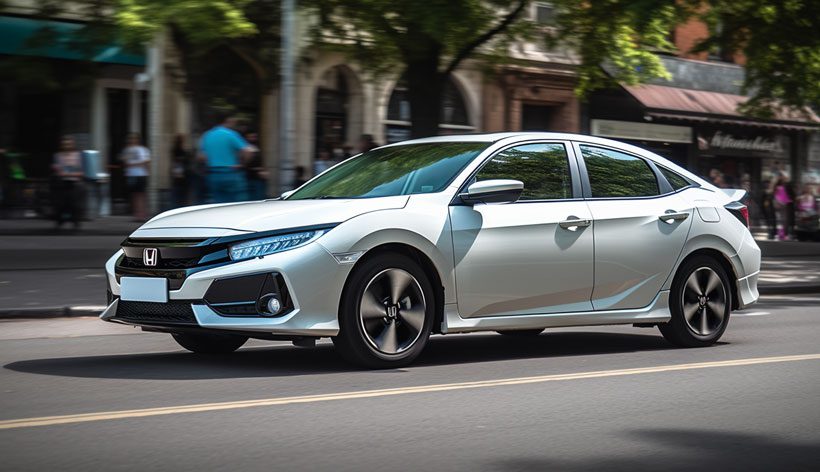
Diagnosing the ABS Light
As we mentioned before, when the ABS light comes on, it signifies a problem within the ABS system itself, such as-
- A malfunctioning sensor
- Control module issue
- Hydraulic system problem
- Low brake fluid
These issues can affect the ABS system’s ability to function optimally, but they do not directly indicate the condition of the brake pads.
Evaluating Brake Pad Wear
To determine whether new brakes are necessary, it is essential to assess the condition of the brake pads independently. Brake pad wear can be determined by-
- visual inspection or
- listening for any unusual noises during braking
- Additionally, some vehicles are equipped with brake wear sensors that will provide a warning when the pads reach a critical thickness.
Factors Influencing Brake Pad Replacement
While the ABS light may not directly indicate the need for new brakes, it is worth considering brake pad replacement under certain circumstances. Factors that influence brake pad replacement include-
- The age of the brake pads: The age of the brake pads may contribute to their overall wearing and possibly impact their performance.
- Their current thickness: Brake pad thickness determines wear level and lifetime. Most brake pad’s thickness is around 10-12 mm.
- The vehicle’s mileage: Brake pad wear depends on vehicle mileage.
- The driving conditions: Brake pad wear may accelerate in city driving with frequent stops or steep terrain.
Symptoms of Worn-Out Brakes
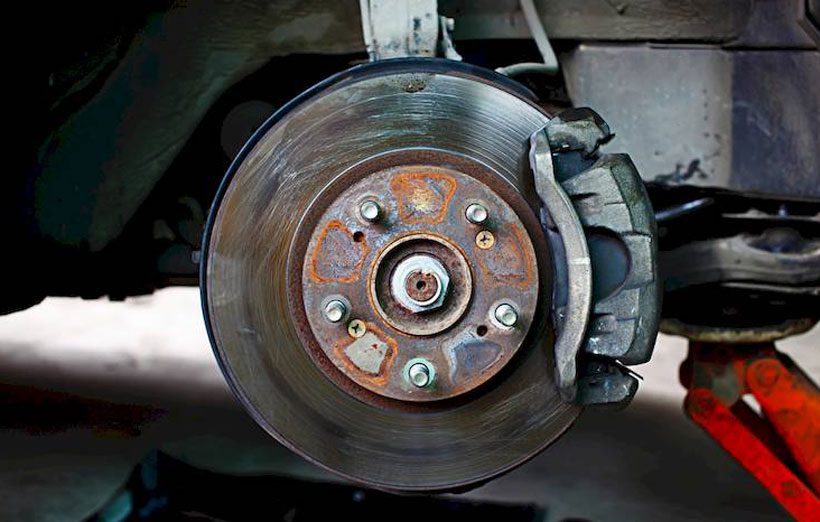
The intensity and components of worn brakes might cause different symptoms. Common symptoms are given below:
- Reduced braking performance: If your brakes seem less responsive or need more effort to stop the car, worn brake pads or shoes may be the cause.
- Squealing or grinding sounds: High-pitched noises while using the brakes may indicate that the brake pads have worn down to the point where the metal backing is touching the braking rotor or drum.
- Vibrations or pulsations: Warped brake rotors or drums may cause brake pedal vibrations.
- Longer stopping distances: Worn brake pads, thinned brake rotors, or reduced friction may cause your car to stop more slowly.
- Pulling to one side: A stuck brake caliper or uneven brake pad wear may cause the car to pull to one side while braking.
- Dashboard warning lights: Brake wear sensors in certain cars may illuminate the dashboard when brake pads are worn.
The Distinction Between ABS Light And Brake Pad Wear Sensors
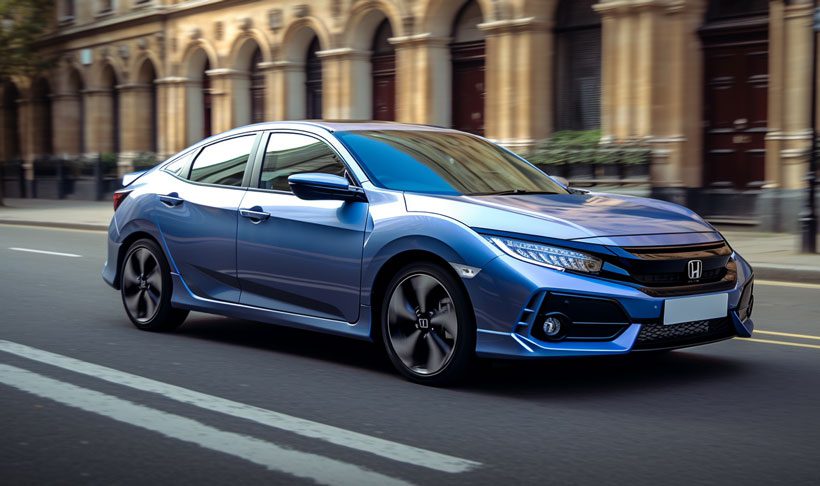
The ABS light and brake pad wear sensors are two distinct components of a vehicle’s braking system that serve different purposes and provide valuable information to drivers. Here’s a table outlining the distinctions between the ABS light and brake pad wear sensors:
| Comparing Aspects | ABS Light | Brake Pad Wear Sensors |
|---|---|---|
| Purpose | Indicates issues with the ABS system | Monitors brake pad wear |
| Function | Alerts to potential ABS system malfunctions | Notifies when brake pads require replacement |
| Activation | A malfunction within the ABS system | Brake pad wear reaching a predetermined limit |
| Consequences | Compromised ABS system performance | Notifies when brake pads require replacement |
| Relationship | Monitors overall ABS system functionality | Monitors wear specifically in brake pads |
It’s important to remember that even though these signs do different things, they both help make a vehicle’s stopping system safer and better.
Addressing any issues indicated by the ABS light or brake pad wear sensors in a timely manner is crucial for maintaining optimal braking capabilities and ensuring vehicle safety.
If you’re wondering whether the ABS light will come on if brakes are worn, you may also be interested in understanding how to fix the ABS light issue. Our article on how to fix ABS light provides step-by-step instructions and troubleshooting tips to help you resolve ABS light problems in various vehicles. Additionally, if you’re dealing with ABS and VSA light on in your Honda, you can check out our article on ABS and VSA light on Honda for information on possible causes and solutions to address these warning lights.Conclusion
In summary, the ABS light is not directly related to worn brake pads, but they can impact the ABS system’s performance. When the ABS light illuminates, it signals a potential issue with the ABS system itself, such as sensor malfunctions or control module problems.
It’s important to distinguish between the ABS light and brake pad wear sensors, as they serve different purposes. Timely attention to ABS system issues and brake pad wear is vital for maintaining optimal braking and vehicle safety.

